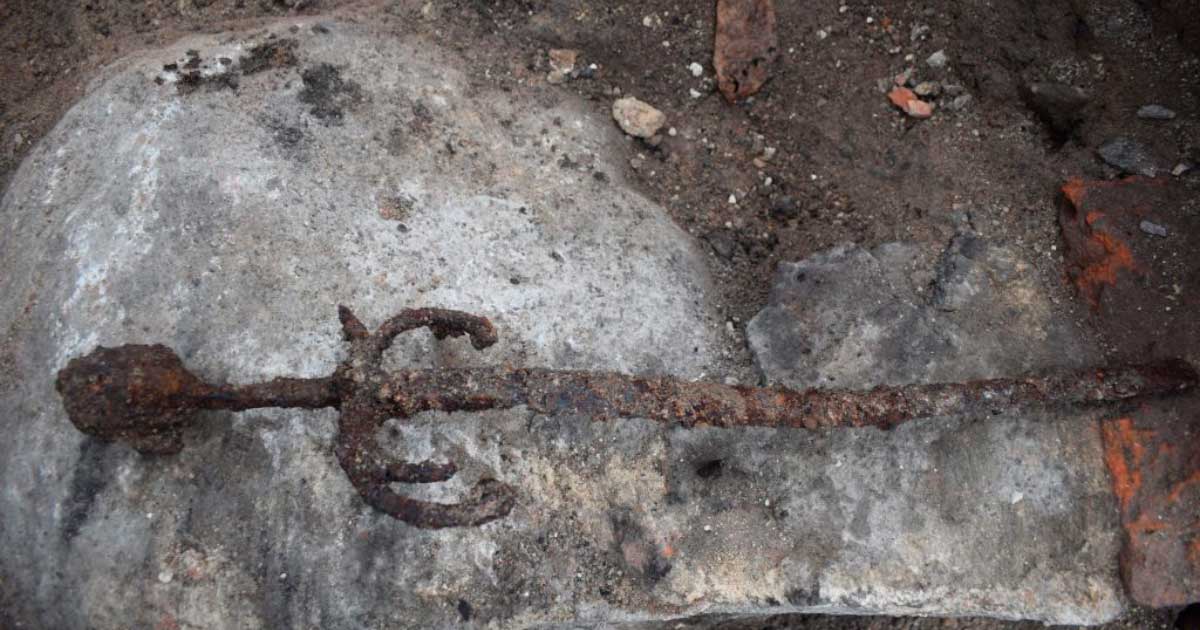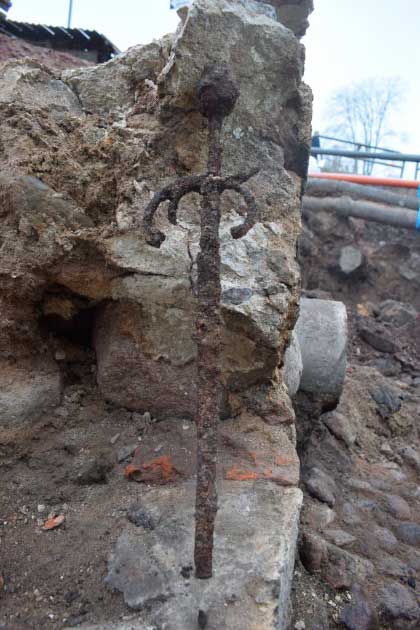In a remarkable discovery, archaeologists in Sweden have unearthed a rare battle-sword dating back to the 17th century, revealing a significant leap in military technology. This exceptional find was made during an excavation of a 400-year-old cellar floor in Kalmar, a city renowned for its historical architecture and strategic importance during the Kalmar War. The discovery not only provides insights into the weaponry of the time but also symbolizes a pivotal moment in military history.
Discovery and Excavation
The team from Arkeologerna, a prominent Swedish archaeological firm, was conducting a dig at the intersection of Kungsgatan and Västerlnggatan in Kalmar, located on Sweden’s southeastern coast along the Baltic Sea. The area, known for its Renaissance-style Kalmar Castle and well-preserved 17th- and 18th-century buildings, had previously been the site of a medieval farm owned by Gotskalk Hulskede in 1368 AD. The farm was referenced again in a 1483 AD document and was destroyed by fire during the Kalmar War in the summer of 1611 AD.

While excavating the cellar floor, the archaeologists uncovered various artifacts including two severely burned hand grinders, charred grains, and fragments of brick, stone, and wood. These remnants were likely from the upper floors of the buildings that once stood above the cellar. The most notable find, however, was a rare Danish sword buried beneath the collapsed roofing material.
The Kalmar War: Context and Conflict
The Kalmar War (1611-1613 AD) was a significant conflict between Sweden and Denmark-Norway. Tensions began in 1607 AD when King Charles IX of Sweden claimed sovereignty over the traditionally Norwegian Lapp territories and imposed taxes. Sweden’s attempt to bypass tolls imposed by Denmark and Norway by creating a new trade route through Lapland exacerbated the situation.

In response, King Christian IV of Denmark-Norway declared war in April 1611 AD, launching an invasion with 6,000 Danish soldiers. The city of Kalmar and its castle were critical targets due to their control over the Kalmar Strait and access to northern trade routes. Despite initial successes, the Danish forces struggled to decisively defeat the Swedish defenders. After months of siege and heavy casualties—approximately 700 Swedish and 200 Danish soldiers—peace negotiations led to the Treaty of Knäred on January 21, 1613, which ended the war.
Evolutionary Leap in Military Technology

The rare Danish sword found in the cellar is considered a key artifact from the period of the “Military Revolution,” a term coined by historian Michael Roberts in 1955 to describe the transformative changes in warfare from 1560 to 1660 AD. This period saw significant advancements in military tactics and weaponry, contributing to the rise of Western Europe as a dominant global power.
According to Arkeologerna, the discovered sword represents “an evolutionary leap” from earlier medieval designs to the more advanced weaponry that began to define the 17th-century battlefield. This transition reflects the broader shifts in military technology and tactics of the time.
Conclusion
The discovery of the Danish sword in Kalmar not only provides a tangible link to Sweden’s military past but also symbolizes the broader changes in warfare during the early 17th century. As an artifact of the Military Revolution, the sword highlights the advancements in military technology and tactics that emerged from the conflict. This find offers valuable insights into the evolution of weaponry and the historical significance of the Kalmar War, marking an important chapter in Sweden’s military history and its role in shaping modern warfare.
